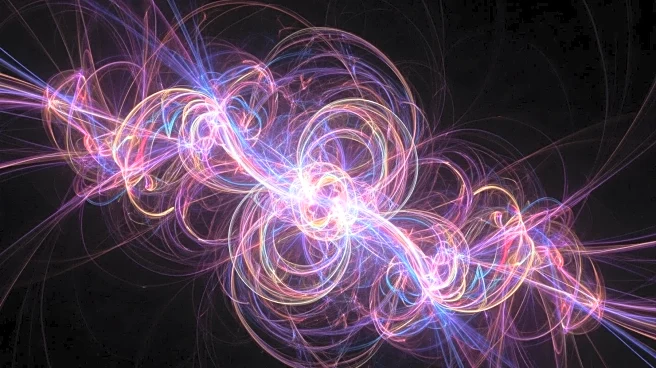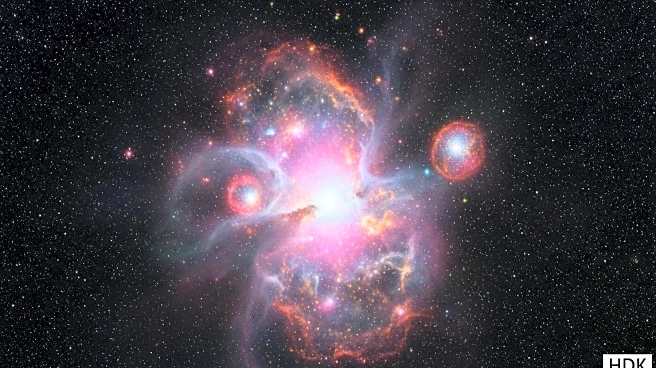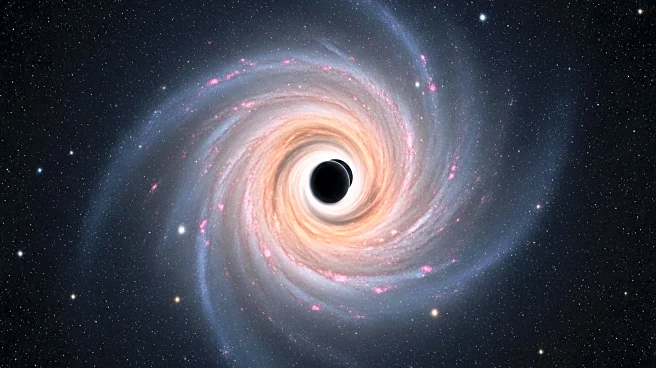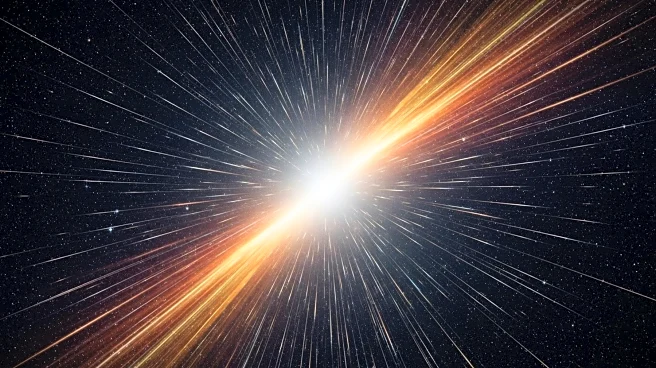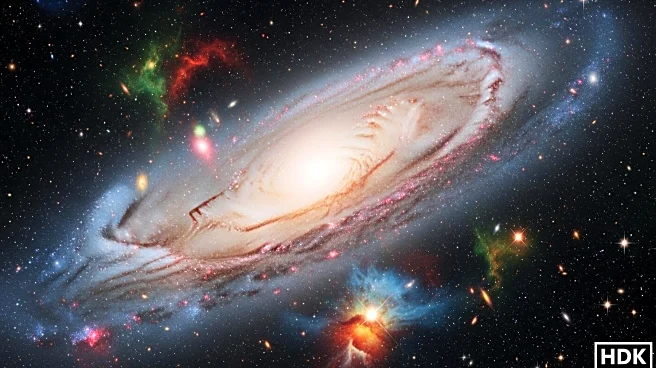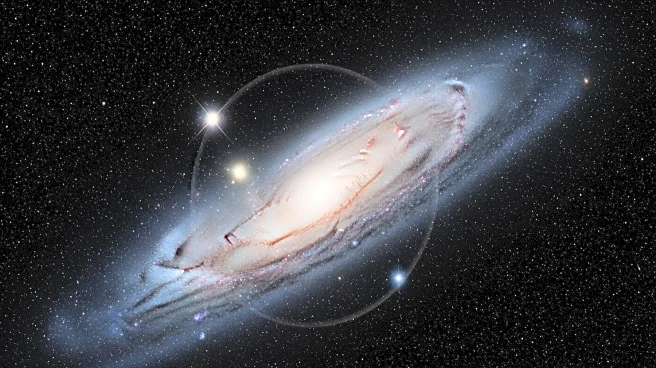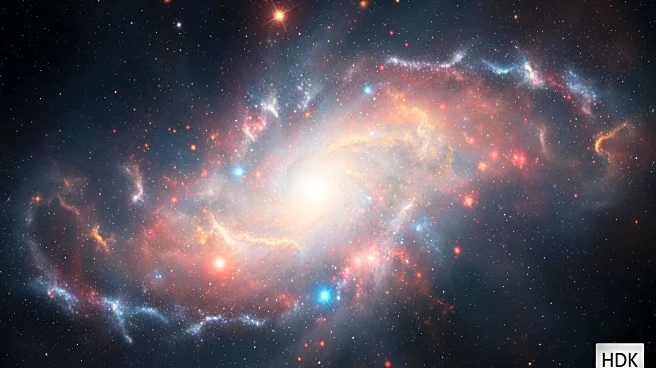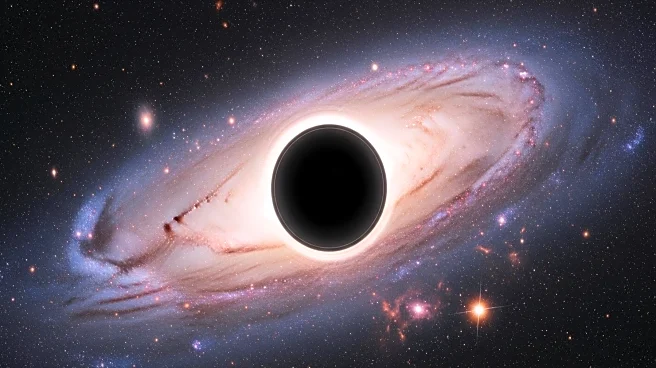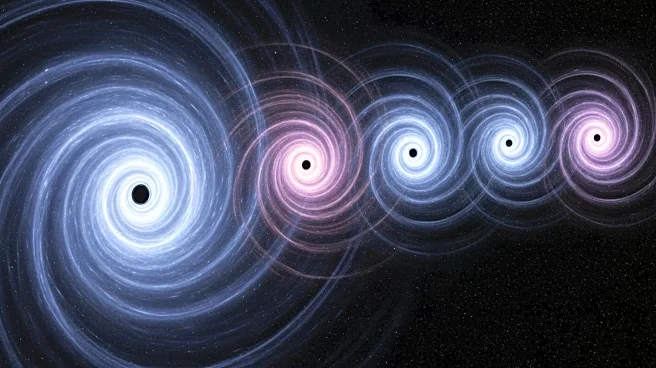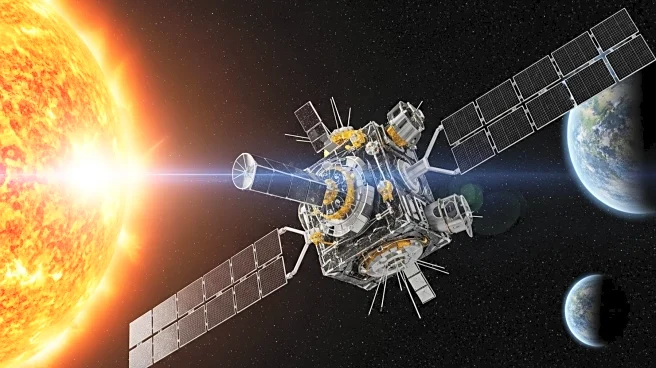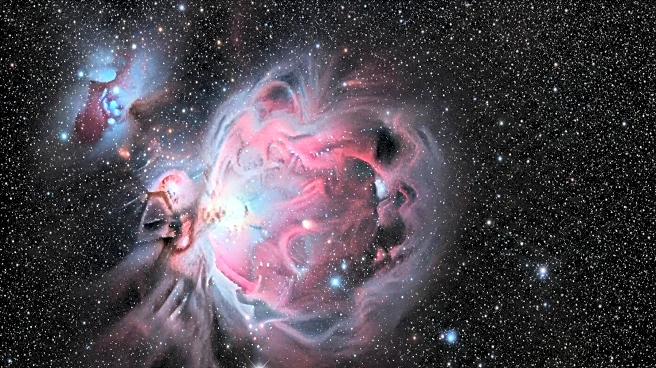What is the story about?
What's Happening?
Researchers at KU Leuven and the Royal Belgian Institute for Space Astronomy have successfully achieved the first true steady state in simulated turbulent plasma. This breakthrough was accomplished using 3D particle-in-cell simulations, which realistically reproduce both particles and electromagnetic fields. The study, published in Physical Review Letters, demonstrates how turbulence heats plasma and accelerates particles to high energies, acting as a cosmic particle accelerator. The researchers introduced a novel element to the simulation setup, allowing energetic particles to escape the simulation domain, thus achieving a balance between energy injection and dissipation. This method mirrors the processes predicted to occur in astrophysical environments, such as those around pulsars and black holes.
Why It's Important?
The achievement of a true steady state in turbulent plasma simulations is significant for astrophysical research. It provides a new method to study particle acceleration in cosmic environments, potentially transforming how turbulence is understood. This advancement could lead to better modeling of high-energy cosmic rays and other phenomena associated with turbulent astrophysical environments. The findings have implications for explaining cosmic-ray observations and understanding the behavior of plasma in space, which is crucial for numerous astrophysical studies.
What's Next?
The simulation techniques developed by the researchers could be applied to study various cosmological objects and physical phenomena. Future research may explore how radiation affects the steady state and particle spectra, or how different species of particles interact in turbulent environments. This method opens up possibilities for addressing many questions related to turbulence in the universe, potentially leading to new insights into cosmic-ray generation and other astrophysical processes.
Beyond the Headlines
The ability to simulate a true steady state in turbulent plasma could have broader implications for understanding the universe's fundamental processes. It may provide insights into the behavior of magnetic and kinetic pressures in cosmic environments, influencing theories about particle acceleration and energy distribution in space. This research could also impact the study of black-hole coronae and other complex astrophysical systems.
AI Generated Content
Do you find this article useful?
